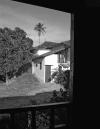Abstract
The following article incorporates results of research carriedout under the guidance of the author as part of the Earthen ArchitectureProgramme at the Universidad Nacional de Colombia. Thearticle sets out advances and trends in earthen architecture inColombia over recent years. The article is divided into three parts:introduction, constructive cultures and recent developments. Itpresents the evolution of earthen construction techniques as wellas processes and constructive cultures which have become valuedelements of Colombian architecture. Pre-Columbian peoples builtwattle and daub houses, Colonial architectural heritage consistsof civil and religious buildings made of adobe, wattle and dauband rammed earth. In the mid 20th century, the press known as aCinvaram for compacting earth was perfected. Recent projects fromthe beginning of the 21th century using compressed earth blocksprovide further evidence for the interest and viability of this type ofarchitecture in Colombia.Apuntes is registered under a Creative Commons Attribution 4.0 International Public License. Thus, this work may be reproduced, distributed, and publicly shared in digital format, as long as the names of the authors and Pontificia Universidad Javeriana are acknowledged. Others are allowed to quote, adapt, transform, auto-archive, republish, and create based on this material, for any purpose (even commercial ones), provided the authorship is duly acknowledged, a link to the original work is provided, and it is specified if changes have been made. Pontificia Universidad Javeriana does not hold the rights of published works and the authors are solely responsible for the contents of their works; they keep the moral, intellectual, privacy, and publicity rights.
Approving the intervention of the work (review, copy-editing, translation, layout) and the following outreach, are granted through an use license and not through an assignment of rights. This means the journal and Pontificia Universidad Javeriana cannot be held responsible for any ethical malpractice by the authors. As a consequence of the protection granted by the use license, the journal is not required to publish recantations or modify information already published, unless the errata stems from the editorial management process. Publishing contents in this journal does not generate royalties for contributors.


